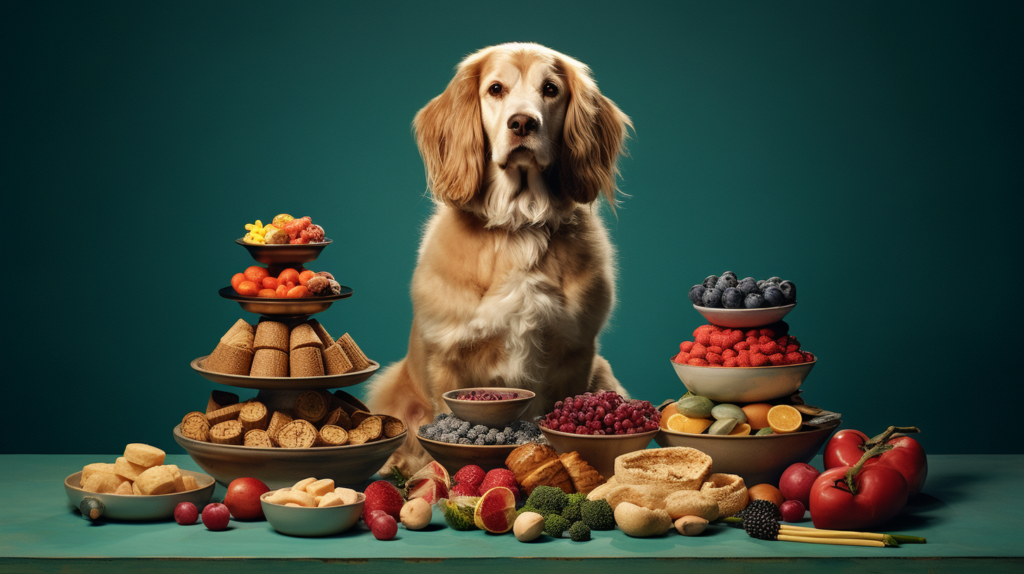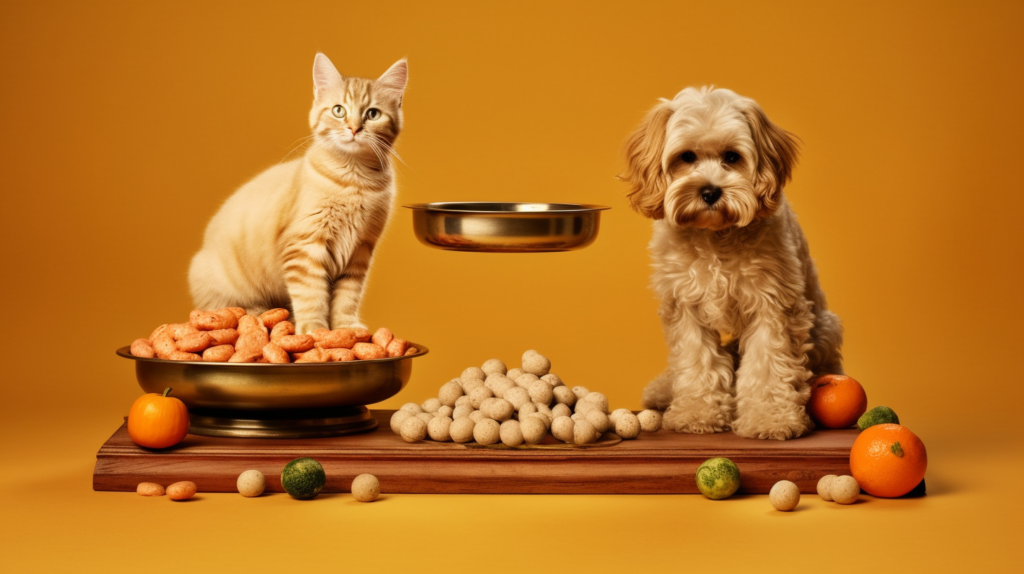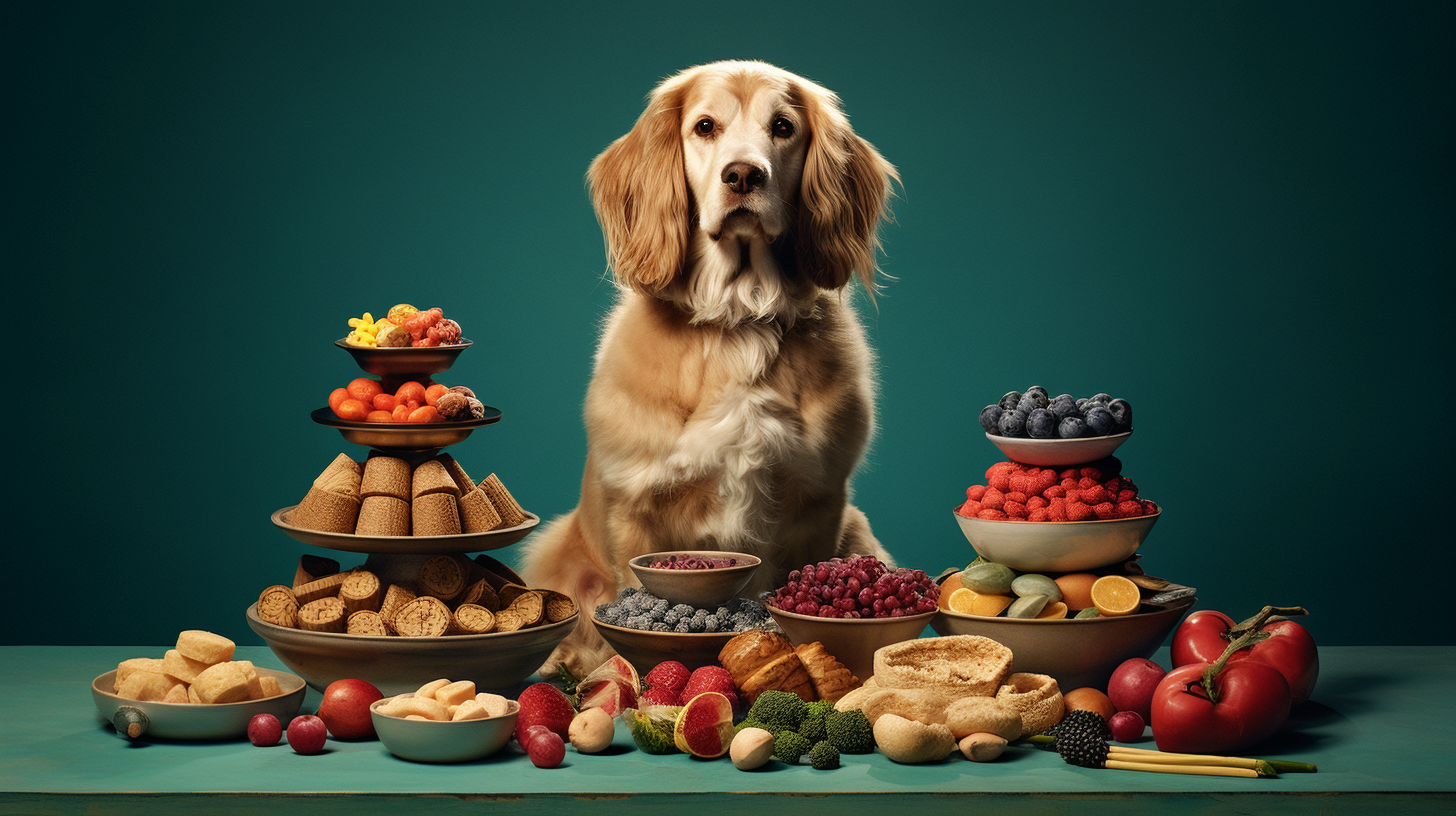Good pet nutrition is essential for keeping your four-legged friends healthy and happy. Eating a balanced diet is important for animal health, but not all pet owners are sure how to provide their furry friends with everything their bodies need to stay in top condition. If you’re concerned about your pet’s nutrition, this article is designed to help, providing valuable pet nutrition tips and advice for ensuring balance in their diets.
1. Tailored Pet Nutrition: Making Balanced Diets Work for Your Pet
It’s no secret that pets need balanced nutrition to stay healthy. Even though their dietary needs may vary depending on their breed, age, and activity level, they all need essential vitamins and minerals. As pet owners, you can ensure your furry friends stay healthy and fit with tailored dietary plans.
Providing Your Pet with a Balanced Diet
Providing a balanced diet means ensuring that their diet contains all the necessary nutrients, minerals, and vitamins for their age, breed, and activity level. This type of diet should follow the minimum guidelines established by animal health experts. It’s also worth noting that there are a variety of options for providing tailored nutrition to your pet. This can include commercial diets and food supplements, or you can whip up meals of food made from scratch to make sure your pet gets what they need.
Getting the Most Out of Your Pet’s Tailored Diet
- Make sure the food you are feeding your pet is appropriate for their breed and age.
- Keep up with your pet’s diet change as they age.
- Schedule regular check-ups when it is time to switch up your pet’s diet.
When creating tailored diets for your pet, it is important to understand their needs, and then create a diet that meets those needs. With the right kind of diet and a little bit of love, you can keep your pet happy and healthy for years to come.

2. Understanding Nutritional Needs of Different Breeds and Ages of Pets
Pets come in all shapes and sizes, from the energetic Jack Russell Terrier to the gentle giant Newfoundland. While all animals need basic sustenance, different breeds and ages may require a specialized diet to maintain good health.
Feeding guidelines will vary depending on the animal’s age and breed. A major factor is size: larger breeds require more calories to support growth, while smaller breeds may require a special “small breed” formula with higher amounts of fat and protein. Puppies need puppy formula for the proper growth and development, while adult animals may require special formulas to meet needs due to age and activity level.
Life stages also play a critical role in the nutritional needs of animals, particularly kittens and puppies. Growth requires a higher intake of essential nutrients, so switching a puppy or kitten to adult formulas too soon can lead to problems such as obesity or poor muscle and bone growth. Finally, the activity levels of an animal should be taken into consideration when selecting its diet. For example, working dogs will require more calories than pets who spend most of their time lounging around the house.
- Different breeds may require a specialized diet
- Life stages and size play an important role in diet selection
- Activity levels should be taken into account when selecting a diet
3. The Benefits of a Protein-Rich Diet in Pet Nutrition
A protein-rich diet plays a major role in ensuring a healthy life for your pet. Protein provides essential amino acids that are needed for proper growth, maintenance and repair of tissues in your pet’s body. Here are the benefits of providing a protein-rich diet to your pet:
- Improved Growth and Development: An adequate intake of protein improves pet growth and development, especially in younger animals. Protein helps build strong muscles, bones, fur and vital organs, providing a strong foundation for a healthy life.
- Greater Energy and Stamina: Lack of proteins can cause reduced energy levels, lethargy and poor condition of fur. Pets need protein rich diets to fuel their active lifestyle and to help sustain their energy for longer duration. This provides the opportunity for longer and more enjoyable playtime activities.
- Healthier Immune System: Protein plays an important role in helping to maintain a strong immune system. It helps support a healthy skin and fur, and also aids in quicker wound healing. Protein-rich diets help your pet to fight off any infectious diseases or illnesses – keeping your pet healthy and happy!

4. High-Energy Foods to Help Support Pet Activity Levels
Just like their humans, pets require fuel to keep up their activity levels – and that means diet ingredients that contain a healthy balance of proteins, carbohydrates and fats. But which foods are best?
The answer lies in foods that pack a high energy punch. Here are some of the powerhouse foods that can support your pet’s activity levels:
- Wild-caught fish – fatty fish like salmon, herring, or mackerel are an excellent source of essential fatty acids that protect your pet’s skin and coat, as well as provide them with ample energy to keep them active.
- High-quality meats – meat is rich in protein which helps to build and maintain strong muscle, provide energy and aid digestion. Lean cuts of quality chicken, turkey and lamb are all good sources of muscle-fueling proteins.
- Crunchy fruits and veggies – high in natural sugars, fruits and vegetables provide a great source of energy as well as important vitamins and minerals to help support healthy eyes, bones, teeth and fur.
By adding these energizing ingredients to your pet’s diet, you can help ensure they are fueling up for all their active adventures. Ready to get started?
5. Incorporating Fruits and Vegetables into a Balanced Pet Diet
Pet owners should consider including fruits and vegetables in their pets’ diets, just as humans do. With their high levels of vitamins, minerals, and antioxidants, introducing fruits and vegetables into a pet’s diet can provide important health benefits. Here are some tips for incorporating fresh fruits and vegetables into balance meals for your pet.
Choosing Fruits and Vegetables: Fruits and vegetables are an important part of a pet diet; however, there are certain rules to follow when feeding them to your pet. It’s important to stay away from grapes, raisins, and onions, which are toxic to pets. Additionally, a pet’s diet should be tailored to their particular needs, so it’s best to ask your veterinarian before introducing new foods. Small amounts of the following fruits and vegetables are generally safe for most pets:
- Apples
- Blueberries
- Carrots
- Celery
- Spinach
- Squash
Serving Tips: Fruits and vegetables can be served either cooked or raw, however some vegetables, such as broccoli and cauliflower, are better served cooked. Generally, small amounts are best as snacks, or you can add vegetables to your pet’s regular meals. If your pet is not used to eating fruits or vegetables, start by adding a few pieces of chopped or diced fruit or veggie to their regular meals. Fruits and vegetables should make up only 10-15% of your pet’s diet.

6. Ensuring Your Pet Receives Essential Vitamins and Minerals in Their Diet
Just like humans, animals need a balanced diet with an appropriate variety of proteins, carbohydrates, fats, and vitamins and minerals. To maintain good health, it’s essential to ensure that your pet is receiving enough vitamins and minerals in their diet.
Vitamins and minerals are important for many of the same functions that they are in humans: they keep the immune system healthy, help to transport oxygen, and help the body to absorb nutrients properly. Without adequate vitamins and minerals, animals can become ill, have problems with energy levels and behavior, and even suffer from skin and coat health.
Here are some steps you can take to make sure your pet is getting the right amount of essential vitamins and minerals:
- Include variety in their diet. Make sure your pet is getting a healthy variety of foods. Include meats, grains, and vegetables in their meals. Different sources of vitamins and minerals will help supplement any dietary deficiencies.
- Choose the right supplements. Vitamins and minerals can be found in supplements as well as in food. Speak to your vet or an experienced pet nutritionist to determine which vitamins and supplements your pet needs and in what dosage.
- Check the quality of food. When choosing pet food, consider the ingredients and the nutrient content. Many of the best brands are certified by the Association of American Feed Control Officials and assure quality standards for pet food.
7. The Role of Homemade Pet Food in Achieving Balanced Nutrition
Pet owners should take great care in preparing homemade pet food if aiming to achieve balanced nutrition for their furry friends. Good ingredients, proper portioning, and being mindful about creating recipes often packed with nutrition are key. Here’s how to get this job done and strike a balance between great-tasting meals and optimal nutrition.
1. Do your research: Many commercial pet foods are filled with poor-quality proteins, artificial ingredients, and cheap fillers, leaving them nutritionally inadequate and unhealthy for long-term consumption. With the right research, homemade pet food can be customised with nutrient-dense ingredients to give cats and dogs the right nutrition their body needs.
2. Get the proportions right: It’s important to include all the essential nutrients, carbs, fats, and proteins when making pet food. Sensible proportions of all macronutrients will allow your pet to obtain optimal nutrition. Make sure you speak to a veterinarian or pet nutritionist, if needed, to get the proportions right for your pet’s specific breed and age.
3. Gather quality ingredients: While commercial pet food brands are often packed with unhealthy ingredients, carefully crafted homemade pet food is a great way to provide your pet with tasty, nutrient-dense meals. Quality ingredients like lean meats, whole grains, vegetables, and fruits all play an essential role in ensuring good nutrition. Consider adding superfoods like oily fish, seaweed, and nut butter, if needed.
- Aim for quality ingredients, balanced proportions, and appropriate portion control.
- Speak to a veterinarian or pet nutritionist for food advice.
- Include superfoods, and fatty acid supplements to ensure balanced nutrition for your pet.

8. Strategies for Helping Picky Pets Adopt Healthy Eating Habits
Offer Variety
Picky pets can become accustomed to an array of meals if you serve them up a variety of flavors and textures. Try incorporating different pet-friendly ingredients and recipes into their diet every few days or weeks. This will give them a chance to try out and eventually enjoy different kinds of food.
Gradual Change
Rather than suddenly changing what they’re eating, try introducing a healthier diet in a gradual way. Mix small, equal portions of the old and the new diet, and increase the ratio of the healthier option in the weeks that follow. This gentle introduction can help pets feel more comfortable with their new meal plan.
Tasty Toppings
If all else fails, there’s always the sweet (and savory) taste of toppings to entice picky eaters. Sprinkling a few hard-boiled eggs, apples, carrots, green beans or a drop of low-sodium broth or broth can give meals an extra oomph that will have pets eagerly licking their dishes clean.
Ensuring your pet is getting the most out of their food is an incredibly important part of overall health and wellbeing. With the right balance of nutrients, minerals, and vitamins, you can help secure a long and healthy life for your furry friend. So don’t just give your pets the food they crave – give the nutrition they need for a balanced diet.
